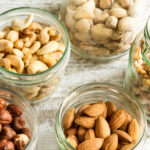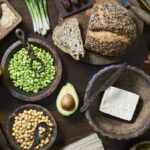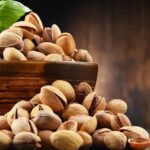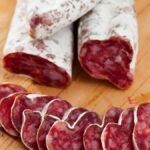It seems like the dream of a vegan with existential doubts, unconvinced of his diet. Nothing less than a tree from which meat can be obtained, the goose tree.
It is one of those stories of hybrid beings between the plant and animal kingdoms whose origin dates back to the 12th century. Copyright had not yet been invented, and for a long time, the sources of a book were, fundamentally, another book.
The first references we have to the goose tree are from Giraldus Cambrensis who, in his Topography Hibernica (1188) tells us about geese that grow from the wood, indicating that they are very abundant in Ireland, where he had traveled accompanying the future king of England. , Juan sin Tierra. In De Natura Rerum (1237-1240), Thomas of Cantimpré tells that these birds are smaller than geese, that they are attached to the tree by their beaks and that, in due time, they fall into the sea and develop until they begin to fly.
At a time when reading was not the population’s strong suit, a good image could be quite eloquent, like the one at the top of this article from The British Library or this one from the Cosmographie Universelle, from the mid-16th century.
With each new author, nuances are added to the story and of course, the mention of the tree cannot be missed in the Book of the Wonders of the World (1357) by the fantasist Juan de Mandeville. In the chapter On the fruits that contain an animal of flesh, bone and blood, he boasts that in England there are trees called barnacles that produced fruits that quickly turned into birds and that could be eaten directly by men.
Lenten fast
The gastronomic issue is relevant in this story, since religious precepts prevented eating meat during Lent and other fasting days. In those periods, the diet was essentially vegetarian, although it could be supplemented, without sinning, by consuming fish.
In this sense, the fruits of the goose tree were, without a doubt, as vegetal as apples.
If geese, and by extension, any duck, could be eaten without any scruple, abbots and religious could count on a well-stocked table in those days of restriction. There were even philosophical foundations that supported this interpretation. The legs of ducks – I am not referring to their females – are webbed like the fins of fish, therefore, they are of the same nature, Abelardo justified. Yes, he’s the same one who got caught for hooking up with Eloisa.
On this, there is a fun twist. The gastronomic journalist Xavier Domingo said that in a Portuguese abbey, during Lent, the monks threw the pigs into the river to “fish” them downstream, then considering them as fish, which they could eat without breaking any precept.
What the legend hides
From our skeptical vision of the 21st century – we no longer believe that the Earth is flat or that good prayers alleviate drought – we can think that all this is a story. But be careful, we can learn a lot of zoology from this story.
If you walk along a beach you can find the animal that gave rise to the legend of the goose tree. You have to look for logs washed ashore by the tide.
Well, that was before we filled the seas with plastic. You can also search for any object that has been floating for some time, from a bottle to a shoe. On its surface it is possible to find some white “shells”. They are the fruit of the tree, which is none other than the wood barnacle, Lepas anatifera. We zoologists like unambiguous scientific names, this one was given by Linnaeus. The Swede was great at giving names: Lepas anatifera, that is, shell that ducks carry.
But hey, weren’t the barnacles made of rock? Yes, the ones we eat, Pollicipes pollicipes, actually live on the rocks. The rock surface is, like the developable land, limited. There is strong competition for space, and barnacles compete with each other, and with other species, to get a place to settle. Evolution led some barnacles to seek life by growing on other surfaces… and there were the trunks of the trees that floated in the sea as urbanizable.
Where are the geese?
If we find the wood barnacles alive, we can better understand the origin of the legend. We will see small creatures moving hanging by their beaks with a long neck – the peduncle of the barnacle – with an oval body, and with feathers – the cirri with which the barnacles feed. It is not strange that with this evidence ancient observers of nature thought of a tree that produced geese.
Furthermore, there were some birds that only appeared in British winters, and no one had ever seen their nests or eggs. Nobody knew how they were born. Why not associate this species with its larvae in the tree? It was a good excuse to mitigate the Lenten fast.
It was and is about barnacles (Branta leucopsis), a migratory species that breeds further north, in the Arctic, where no one had gone. And if he had gone, he had not returned to tell about it.
A semantic trace remains of this fantastic story. The two species linked by legend share a name. In English, the barnacle is goose barnacle, while the bird we call barnacle is barnacle goose. In this case, the order of the factors does alter the product, things that that strange language has.
In ancient times, wood barnacles grew on logs floating in the ocean. But as we continue to throw garbage into the sea, this curious creature will change its name, making it more appropriate to call it the plastic barnacle. Then it will be much more difficult to explain the legend of the fabulous goose tree.













